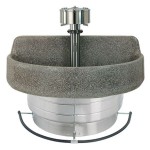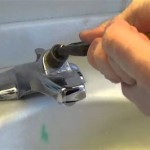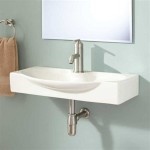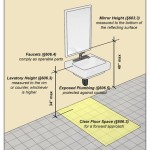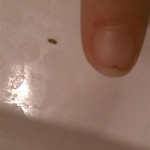BC Building Code: Bathroom Exhaust Fan Height Requirements
The British Columbia Building Code (BCBC) outlines specific requirements for various aspects of building construction, renovation, and maintenance. These regulations are designed to ensure the safety, health, and accessibility of buildings for occupants. One critical component often addressed within the BCBC is the installation and performance of ventilation systems, particularly bathroom exhaust fans. The purpose of bathroom exhaust fans is to remove moisture and odors, preventing mold growth, structural damage, and maintaining indoor air quality. To ensure these fans function effectively, the BCBC specifies guidelines regarding their placement, including height requirements. Understanding these requirements is crucial for builders, contractors, homeowners, and inspectors to ensure compliance and optimize the performance of the ventilation system.
While the BCBC does not explicitly state exact height measurements for bathroom exhaust fan installations in the same way it defines dimensions for stairs or door openings, it provides performance-based requirements that implicitly influence the placement height. These performance-based requirements relate to the fan's ability to effectively capture moisture and contaminants at their source. The code emphasizes effective ventilation and the prompt removal of moisture-laden air; therefore, the location and, consequently, the height of the fan become critical considerations in achieving this objective. The code underscores the importance of preventing moisture accumulation and ensuring adequate air changes within the bathroom environment.
The absence of a precise, numerical height requirement in the BCBC necessitates a practical approach to installation based on several factors, including the bathroom's layout, the location of moisture sources (shower, bathtub, toilet), and the fan's capacity (measured in cubic feet per minute, CFM). The objective is to position the fan to maximize its effectiveness in intercepting moisture at its source before it can disperse throughout the room. This often translates to placing the fan as close as reasonably possible to the shower or bathtub, where the majority of moisture is generated.
Key Point 1: Performance-Based Requirements and Source Capture
The primary principle guiding bathroom exhaust fan placement under the BCBC is performance-based. This means the emphasis is on whether the fan effectively removes moisture and odors from the bathroom environment, rather than strictly adhering to a specific height measurement. The code's focus is on achieving a defined outcome: preventing moisture buildup, mitigating mold growth, and ensuring acceptable air quality. This principle dictates that the fan should be positioned to capture moisture at its source, namely the shower and bathtub areas. While the code does not provide prescriptive height values, the underlying goal is to ensure the fan's placement maximizes its ability to intercept and exhaust moisture-laden air before it has a chance to condense on surfaces.
Effective source capture is influenced by several factors beyond just height. The fan's CFM rating, the bathroom's size and layout, and the presence of other ventilation sources (e.g., windows) all play a role. A higher CFM fan can potentially be placed further from the moisture source and still achieve adequate ventilation, while a lower CFM fan requires closer proximity. The design of the bathroom itself, including ceiling height and the placement of fixtures, will also affect airflow patterns and the optimal location for the exhaust fan. Consideration must also be given for the fan's inlet design. Some models have a broad capture area while others are designed to pull air directly from below. This will affect the efficacy of height.
Consider a large bathroom with a high ceiling. A single, low-CFM fan placed far from the shower will likely be ineffective in removing moisture, regardless of its height. Conversely, a smaller bathroom with a standard ceiling height and a high-CFM fan positioned directly above the shower will likely provide adequate ventilation, even if it's slightly higher than ideal. The evaluation of ventilation system performance should be conducted while the bathroom is in use to observe actual moisture generation and removal.
Key Point 2: Practical Considerations for Fan Placement
Beyond the performance-based requirements, several practical considerations influence the optimal height and location of a bathroom exhaust fan. These considerations include accessibility for maintenance, structural limitations, and adherence to electrical safety codes. Accessing the fan for cleaning and repairs is essential for maintaining its effectiveness over time. The fan should be installed in a location that allows for easy removal and reinstallation without requiring significant demolition or specialized tools. Structural limitations, such as joist placement and the presence of other utilities (e.g., plumbing or electrical wiring) within the ceiling cavity, can also restrict the available locations for the fan.
Electrical safety codes are paramount when installing any electrical appliance, including bathroom exhaust fans. The BC Electrical Code specifies minimum clearances between electrical components and water sources to prevent electrical shock hazards. The fan must be installed in accordance with these requirements, ensuring that it is adequately grounded and protected from moisture ingress. Considerations should include the use of GFCI (Ground Fault Circuit Interrupter) protection on the circuit serving the exhaust fan. Using a qualified electrician for the installation is strongly recommended to ensure compliance with electrical safety codes and proper wiring techniques.
Condensation and dripping from the fan housing can also be a concern, especially in colder climates. Proper insulation of the fan housing and ductwork can help to mitigate this issue. Additionally, the ductwork should be sloped slightly downward away from the fan to allow any condensation that does form to drain away from the fan and prevent damage. The exhaust duct should lead to the exterior of the building, preferably through a roof vent or wall vent with a backdraft damper to prevent outside air from entering the bathroom. Improper venting can lead to moisture being trapped within the building structure, causing damage and mold growth.
Key Point 3: Interaction with Other Building Code Provisions
The installation and operation of bathroom exhaust fans are not isolated from other provisions within the BCBC. The performance of the ventilation system is influenced by factors such as the building's airtightness, the type of heating and cooling system installed, and the overall design of the building envelope. For example, a well-insulated and airtight building will require a more effective ventilation system to remove moisture and contaminants than a leaky building with natural infiltration. Similarly, the type of heating system installed can affect the humidity levels within the building and the demand for ventilation.
The BCBC also addresses issues related to noise transmission. Bathroom exhaust fans can generate noise, which can be disruptive to occupants, especially in multi-family dwellings. The code may specify requirements for sound-rated fans or sound isolation measures to minimize noise transmission between units. Selecting a fan with a low sone rating (a measure of loudness) is a practical way to reduce noise levels. Additionally, proper installation of the fan and ductwork can help to minimize vibrations and noise transmission.
Furthermore, accessibility requirements within the BCBC may influence the placement and operation of bathroom exhaust fans. In accessible bathrooms, the fan controls (e.g., switches) must be located within reach of individuals with disabilities. The fan's noise level and airflow should also be considered to ensure they do not create a barrier to accessibility. Consider automatic humidity sensors when installing exhaust fans in accessible units. This will ensure the fans are activated when needed without requiring user interaction.
In summary, while the BCBC does not define an exact height for bathroom exhaust fan installation, effective source capture is the primary goal. Practical considerations such as maintenance accessibility and structural limitations, along with compliance with electrical and other building code provisions, must be carefully evaluated. Performance-based requirements necessitate a holistic approach to ventilation system design, ensuring that the fan's placement, capacity, and operation are optimized to effectively remove moisture and maintain indoor air quality.

Ventilation Canadian Home Inspection Services

How To Choose The Right Exhaust Fan Jd Lighting
Hrv Primary Ventilation Exhaust Guidelines
Hrv Primary Ventilation Exhaust Guidelines

Residential Bathroom Code Requirements Design Tips

Bathroom Exhaust Fans Greenbuildingadvisor
What Size Of Vent Pipe Is Required For A Toilet Quora
Hrv Primary Ventilation Exhaust Guidelines

Panasonic Whisperfit Dc Led Pick A Flow 50 80 110 Cfm Energy Star Quiet Ceiling Bathroom Exhaust Fan Flex Z Fast Install Bracket Fv 0511vfl1 The Home Depot
Hrv Primary Ventilation Exhaust Guidelines
Related Posts
